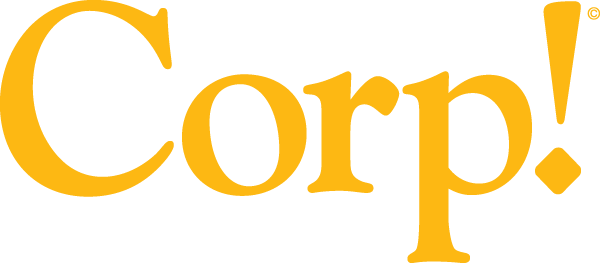Anyone familiar with the Skill Tree gaming concept knows the skill tree is a graphic representation of a character’s development in the game. The tree allows each character to unlock new abilities, strengthen abilities they already have and decide which to develop based on the character’s needs.
The founders of a brand new consulting business are using that concept to help businesses learn the same lessons.
Metro-Deroit based SkillTree Strategic Consulting, launched in early April by co-founders Darryl Odom, Leslie Mahlmeister and Jason Matthews, was conceived to provide strategic and operational support and consultation to small- and medium-sized businesses and non-profit organizations.
The firm’s mission: Help evolve these organizations into their next stage by helping clients “adopt and promote a culture of strategic decision making via the conscientious and customized application of methodologies” that promote the long-term health and sustained growth of their organizations, according to its mission statement.
“We want to support small businesses and small nonprofits with all of the activities that go on in a business that aren’t really related to their specific mission,” said Mahlmeister, who has a master’s degree in business administration and an undergraduate degree in marketing, both from Wayne State University. “We want to provide all of those supports they need in order to be more efficient.”
For instance, according to Odom, many small-business leaders are focused on the day-to-day operation of the business that they don’t necessarily learn the intricacies of compliance or IT and disaster management.
He said that fewer than 3% of entrepreneurships are led by people with business degrees, which he points out leaves a “skills gap” in those kinds of areas.
“People … are starting a business, they don’t necessarily have time to redirect their career path to getting a degree,” Odom said. “They might not stop to do a business plan for disaster recovery. They might not stop to do a policy plan for new hires. They have a business to run, a family to feed.”
That’s where SkillTree comes in.
“We see a gap we can fill,” Odom said. “We can bring our experience and business acumen and provide that direct support so they can focus on their mission.”
That’s where the skill tree comes into play. It’s a holistic view of an organization’s structure and growth paths, a customized tool to help optimize resource allocation, understand the company’s vision and make strategic decisions for future growth.
SkillTree uses the concept to put together a report designed to assess the various aspects of the business operation.
“The tree is your business and you try to make it grow,” said Matthews, who has a degree in finance from Wayne State. “You have your different branches are leaves … one could be IT, another could be operations, one could be policies and procedures, one could be compliance. That’s why we use the idea of a Skill Tree, so you can see it visually bloom.”
The three co-founders established SkillTree after the company for which all three previously worked was bought out. The three, who have a long history together – Odom and Matthews have partnered on several businesses – decided after that purchase it was time to strike out on their own.
Odom said the trio is “looking to apply our skills” on a more ground level with organizations where they feel the impact and have a “more positive outlook about the work they do.”
“One of my passions is helping people,” Matthews said. “People have these missions, and they may not know what they don’t know. They may not know there’s a compliance issue or a disaster management issue, or with onboarding and offboarding.”
To find their way in this niche – “The market is flooded with consultants,” Odom said – SkillTree is working networks, getting help from friends and using word of mouth to make contacts.
“We’re going to get out there and pound the pavement,” Mahlmeister said.
The glut of business consultants made the decision to strike out on their own a little tougher to make, according to Odom.
Getting businesses to answer the question “Why choose us” is a task Odom said he finds “intimidating.”
“If you have your own business, if you want a consultant, you’re not going to have trouble finding one,” he said. “Standing out in such a huge crowd has been an ongoing conversation. That part to me is intimidating.”
To find its way, SkillTree will focus largely on small businesses. One example: a startup telehealth business that has no infrastructure around what they’re doing. While they know how to conduct the telehealth and how to bill for it, the startup may not be as aware of compliance issues or how to protect their information from a cybersecurity attack.
Another example, Mahlmeister said, would be a nonprofit that gets caught up in the world of grant applications. It’s easy for nonprofits to “lose their mission,” she pointed out. They get grant money and now have to create a program that fits with the grant.
After the grant is gone, the nonprofit has to try to find a way to keep those people or wind up laying them off. Then they see another grant and go after that one.
“You’ve got all these disparate programs going on, and maybe they align with your mission but maybe they don’t,” Mahlmeister said. “One of the things I tell nonprofit leaders is you can’t just grab grants. You’ve got to be thinking about how those grants support your mission.”
Odom said part of the inspiration for striking out on his own came during the pandemic, when he watched people he knew start businesses at home. While a vast majority of those failed, he said, a “significant number did great.”
The problem? Now they’re back in the real world and have no idea how to grow. They run into supply chain limitations and have to figure out shipping and distribution issues.
To help businesses straighten out their issues, Matthews said, SkillTree is banking on being able to build relationships.
“I tell people that ‘people invest in you,’” he said. “They may like the (business) idea, but they’re betting on you. If they like you, they’re willing to give you a chance. I think we have good social credit, and I think that will be one of the things that differentiate us.”
























